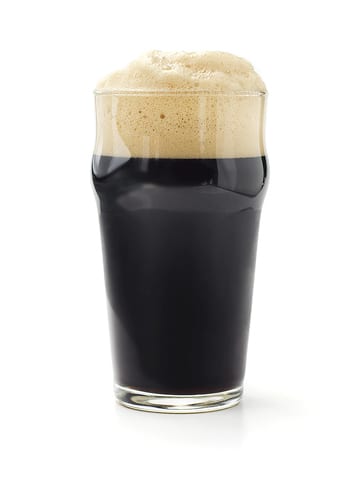Pairing wine with chocolate has become a staple for most wineries and is certainly a popular feature during the month of February with Valentine’s Day. Beer and chocolate not only being paired but also fused together in one drink maybe hasn’t reached the popularity of the good grape and cocoa bean, but the chemistry does offer a taste that many brew drinkers have taken a liking to over the years.
A 2016 article in Men’s Journal noted that “brewers looking for an extra kick have integrated the treat (chocolate) into their ales and lagers.” Some beer websites and publications have made a push to promote how well beer and chocolate go together.
Chris Schell, head brewer for Robin Hood Brewing Company in Bellefonte, says that any dark beer with some body and a little sweetness is a good candidate to have chocolate added to it.
“Stouts and porters are typical examples, but people are getting wild these days,” he says. “We sold a ‘strawberry cocoa black milkshake ale’ at the brewpub in October. There there’s ‘white stout.’ That’s a blonde ale infused with either chocolate, coffee, or a combination of the two, which approximates the roasty character of a traditional stout without imparting much color.”
As a professional brewer, Schell first made a chocolate beer in 2011 at a brewery he worked for in upstate New York. He says the most important part of adding chocolate to beer is the type of chocolate being used.
“Lipids, like glycerol and cocoa butter, ruin beer foam, so ‘whole’ chocolate-like candy bars is typically eschewed,” he says. “Chocolate syrup and cocoa powder are used more commonly, but chocolate syrup typically has lots of artificial ingredients, and cocoa powder can gum up piping or contribute a gritty texture if used improperly.
“There’s a new product on the market called Cholaca that claims to be the first fully water soluble chocolate product. I prefer cocoa nibs, which are the solid, nonfatty portion of the cocoa bean. I hang them in an infusion bag in the finishing tank.”
John Trogner, cofounder and brewmaster of Troegs Brewery in Hershey, says Troegs also uses nibs in its brewing. Troegs has Chocolate Stout, Nitro Chocolate Stout, and Impending Descent, which is an imperial stout that features chocolate as a main ingredient, and it occasionally releases chocolate beers in its Anthology variety packs, including a Cherry Chocolate Stout.
“We always loved the subtle sweetness of chocolate malt in beer, and we’ve used it in a few favorites such as Jovial, Troegenator, and Mad Elf,” he says. “When we’ve wanted to go even bigger with the chocolate notes, we’ve gone straight to the source: cocoa nibs. In a beer like our Chocolate Stout, cocoa nibs add a beautiful depth and warm roastiness. Sometimes we’ll taste something, hit upon an amazing flavor, and say, ‘That should be a beer!’ That happened with those chocolate cherry cordials that burst in your mouth. Certain flavor combinations just work, and that’s one of them.”
Trogner says Troegs first experimented with chocolate as an ingredient through its Scratch Series, but the first packaged beer to feature chocolate as a main ingredient was Impending Descent.
Draft magazine published its “10 Chocolate Beers to Drink Now.” The list included Penn Brewery’s Chocolate Meltdown, Samuel Smith’s Organic Chocolate Stout, and Rogue’s Chocolate Stout and Chocolate Double Stout.
“Chocolate has such a distinctive and popular taste, it’s easy to use as the main flavor component in a recipe,” Schell says. “It’s also a great bridge tool in big, dark beers. If you want to make, say, a raspberry imperial stout, a little touch of chocolate can help express the sweetness of the berries and crutch the roasty character of the dark malts, which will soften and develop their own red berry flavor as they age.”
Schell notes that beers don’t need to have chocolate included to be branded as “chocolate,” so if you’re seeking chocolate beers out, make sure chocolate is listed as an ingredient in the Statement of Composition on the front of the label. He adds that Robin Hood is preparing to release its Raspberry Truffle Cream Stout.
“And I also keep meaning to make a chocolate version of our Maiden Milk Stout,” he says. “Someday, I’ll do the mint chocolate porter the brewpub staff keeps pestering me for!”
Even if he doesn’t make the mint chocolate porter anytime soon, Schell believes the chocolate beer trend is here to stay.
“Chocolate will never be unpopular!” he says. “As beer styles continue to develop, it’ll show up in lots of new and surprising places.”
David Pencek is a freelance writer in State College.



